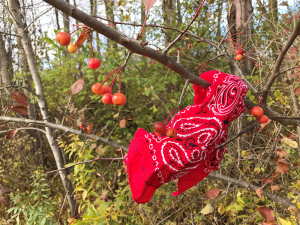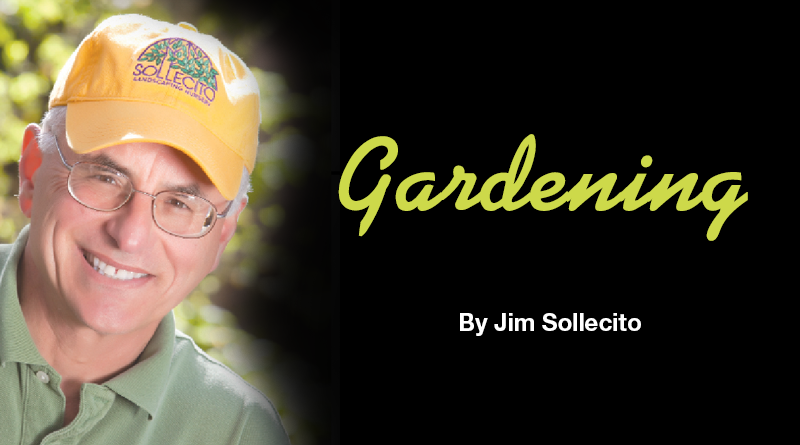Apple of My Eye
An apple a day is a win-win situation
By Jim Sollecito

My dog and I enjoyed a brisk November walk at Three Rivers Wildlife Management Area in Lysander on one of those days when the air just feels right.
I was taking in the various plants showing off their seasonally appropriate personalities when my attention was drawn to something red flashing across the field.
I needed to see what this stoplight color was all about. From a distance, it appeared to be more than just the last vestiges of the previous growing season. As I got closer I saw it was a combination of natural and man-made fibers.
Some hunter lost his bandana on a lovely crabapple that bore a bumper crop of crimson fruits contrasting boldly with the yellowing foliage. I wondered if someone picking and eating these fruits paused to clean the persistent autumn raindrops from their glasses.
Instead of stuffing their kerchief deep enough into a pocket, was it lost in the breeze?
The answer, my friend, was blowing in the wind.
That got me thinking about apples. I know the only difference between an apple and crabapple is the size of the fruit.
Some crabapples are actually tastier than some bland apples. For example, there are more than 55 varieties of Red Delicious. Considered delicious in 1880, their mealy texture and thick skins have lost favor to recent introductions.
They traveled well from Washington state and were the No. 1 selling apple for over 50 years; but not for much longer. Improved, superior varieties that don’t need nearly as many sprays and produce tastier fruit are readily available now. Gold Rush happens to be my personal favorite and I grow a lot of these on our farm.
Trading with hard cider
Until the 19th century, apples were drunk, not eaten. Cider was a popular beverage since water was often unfit to drink. Hard cider could be the only alcohol available in rural areas.
In fact, farm workers might be paid in part with hard cider. Settlers could claim land by clearing five acres, planting 30 various apple trees and living on the land for five years. Some of those trees might have come from the early nurseryman Johnny Appleseed.
Some of the many varieties of the genus Malus growing wild in our woods are very possibly descendants of those early apple trees. Since they were propagated from seed, the offspring might or might not appear anything like the parents.
An apple is still one of the easiest, healthiest, most portable things we can enjoy. I have found having one around 4 p.m. gives me a burst of energy that no candy bar can match. Plus, as they say, an apple a day is good for apple growers and for our well-being.
One of my goals for this year is a series of small steps to keep me as healthy as possible. Many of my landscape clients are doctors and I much more enjoy seeing them outside of their offices than in their exam rooms.
So here’s to staying positive while testing negative. Take some simple steps toward a healthier you in 2019, because standing still is not an option.
Jim Sollecito is the first lifetime senior certified landscape professional in NYS. He operates Sollecito Landscaping Nursery in Syracuse. Contact him at 468-1142 or jim@sollecito.com.

